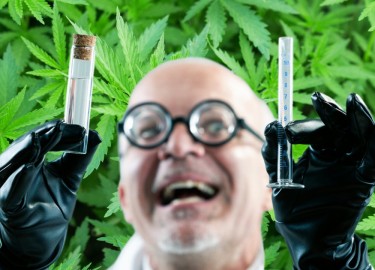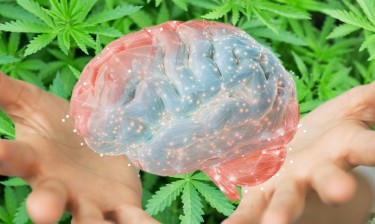
A Tale of Two Studies
Exploring the nature of cannabis science
The pursuit of scientific truth is a noble endeavor, but it is not without its complexities and contradictions. Even as researchers strive for objectivity, the realities of funding, politics, and preconceived notions can influence the direction and interpretation of scientific inquiry. Nowhere is this more apparent than in the contentious field of cannabis research.
A 2020 analysis published in Science magazine revealed a striking disparity in cannabis research funding. Of the $1.56 billion directed to the topic between 2000 and 2018 in the United States, Canada, and the United Kingdom, roughly half was spent on investigating the potential harms and adverse effects of recreational cannabis use. The U.S. National Institute on Drug Abuse (NIDA), the largest funder, allocated more money to studying cannabis misuse and its negative consequences than to exploring the therapeutic potential of cannabis and its derived compounds.
This imbalance underscores a troubling reality: not all scientific research is created equal. Just as the tobacco industry once enlisted medical professionals to promote smoking, some cannabis research may be steered toward finding and emphasizing negative outcomes. Studies that dare to suggest therapeutic benefits or challenge prevailing narratives often face bureaucratic hurdles and skepticism from agencies like the Drug Enforcement Administration (DEA).
Against this backdrop, today we'll examine two cannabis studies published just months apart. Though similar in design, these studies arrived at markedly different conclusions about the cognitive impacts of cannabis use. By juxtaposing their findings, we'll shed light on the contradictory nature of cannabis research and the importance of critical thinking when interpreting scientific results.
As we delve into these studies, it's crucial to remember that science is an ongoing process of discovery, not a collection of immutable truths. While some research may be tainted by agendas or biases, other studies earnestly seek to expand our understanding of this complex plant and its effects on the human body and mind. Only by approaching each study with a discerning eye and a willingness to question assumptions can we hope to navigate the murky waters of cannabis science and emerge with a clearer picture of the truth.
In the coming paragraphs, we'll take a closer look at these two divergent studies, their methodologies, and their implications. By doing so, we aim to equip readers with the tools to critically evaluate cannabis research and make informed decisions in the face of conflicting scientific narratives.
Study 1 – The Harms!
The first study we'll examine is titled "Regular cannabis use alters the neural dynamics serving complex motor control," published in the journal NeuroImage in 2023. This study aimed to investigate the effects of regular cannabis use on the brain mechanisms underlying motor planning and execution. The researchers used magnetoencephalographic (MEG) imaging and time series analysis to compare the neural oscillatory dynamics of 18 regular cannabis users and 23 demographically matched nonuser controls during a motor sequencing task.
At first glance, the study appears to be well-designed and comprehensive. The researchers controlled for age, sex, race, and alcohol use, and participants underwent detailed interviews and screenings to assess their substance use patterns and overall health. MEG data were carefully processed and analyzed, and the results were presented with statistical rigor.
However, upon closer inspection, several inconsistencies and potential biases emerge. First and foremost, the study's conclusion that regular cannabis use negatively impacts cognitive function seems to overreach the actual findings. While the researchers did observe differences in neural oscillatory patterns between cannabis users and nonusers, these differences did not translate into any significant impairments in task performance. In fact, the study explicitly states that "there were no group differences in task performance (e.g., reaction time, accuracy, etc.)."
This discrepancy raises questions about the researchers' interpretation of their data. If cannabis users performed just as well as nonusers on the motor sequencing task, can we really conclude that their neural differences reflect a negative impact on cognitive function? It's possible that the observed neural alterations represent compensatory mechanisms or adaptations that allow cannabis users to maintain normal performance despite chronic exposure to the drug.
Another potential issue lies in the study's premise and framing. The researchers seem to approach the topic with the preconceived notion that cannabis use is inherently harmful, as evidenced by their emphasis on identifying "deficits" and "impairments" in the cannabis-using group. This bias may have influenced their interpretation of the neural data and led them to overstate the significance of the observed differences.
Furthermore, the study's sample size of 41 participants (18 users and 23 nonusers) is relatively small, which limits the generalizability of the findings. The researchers also acknowledge that they could not control for the type, dose, or frequency of cannabis use among their participants, introducing additional variability that could confound the results.
Despite these limitations, the study's authors assert that their findings "demonstrate that regular cannabis use is associated with alterations across multiple brain regions involved in motor control" and that these alterations "may be precursors of behavioral deficits that may emerge in the future." While these statements are presented as definitive conclusions, they seem to rely more on speculation than on the actual evidence presented in the study.
Now, let's take a look at another study on a similar subject matter and how they concluded...
Study 2: The Gains!
The second study we'll explore is titled "Medical cannabis does not impair cognitive function when used as prescribed," published in the journal Drug Science, Policy and Law in 2022. This study took a different approach to investigating the cognitive effects of cannabis use, focusing specifically on patients using prescribed medical cannabis to manage various health conditions.
In this open-label trial, 40 participants (22 females) with a mean age of 41.38 years attended a single laboratory session where they self-administered their prescribed medical cannabis under supervision.
The researchers assessed cognitive performance using the Cambridge Neuropsychological Test Automated Battery (CANTAB) and Druid application (app) before and after cannabis administration. They also measured subjective drug effects using visual analog scales at multiple time points.
The study's methodology has several strengths. By focusing on medical cannabis users following their prescribed regimens, the researchers captured a more realistic picture of how cannabis affects cognitive function in a clinical context. The use of validated cognitive assessment tools like CANTAB and Druid adds credibility to the findings, as does the inclusion of subjective measures to gauge participants' experiences.
However, the study is not without limitations. The open-label design and lack of a placebo control group may introduce bias, as participants' expectations could influence their performance and subjective ratings. The single-session format also provides only a snapshot of the acute effects of medical cannabis, leaving questions about long-term cognitive impacts unanswered.
Despite these caveats, the study's results paint a strikingly different picture than the previous study on regular cannabis users. Participants' performance on the CANTAB Multitasking Test and Rapid Visual Information Processing test actually improved over time, while all other cognitive measures showed no significant changes. These findings suggest that, when used as prescribed, medical cannabis may have minimal acute impact on cognitive function in patients with chronic health conditions.
The stark contrast between the conclusions of these two studies highlights the complex and often contradictory nature of cannabis research.
While the first study found neural alterations in regular cannabis users that were interpreted as potentially harmful, the second study found no evidence of cognitive impairment in medical cannabis patients following their prescribed regimens.
These divergent findings underscore the importance of context and nuance in interpreting scientific results. Factors such as the reason for cannabis use (recreational vs. medical), the specific products and doses consumed, and individual differences in health status and other variables can all influence the observed outcomes.
Moreover, these studies remind us that science is not a monolith but an ongoing process of inquiry and discovery. As new evidence emerges, our understanding of complex topics like cannabis and cognition evolves, sometimes in unexpected directions. While it's natural to seek definitive answers and clear-cut conclusions, the reality is often messier and more ambiguous.
As consumers of scientific information, it's crucial that we approach research findings with a critical eye, considering the strengths and limitations of each study and the broader context in which they exist. Only by embracing the inherent uncertainty and variability of scientific inquiry can we hope to make informed decisions and policies around contentious issues like cannabis use.
The Sticky Bottom Line
As we've seen through the examination of these two studies, the relationship between scientific research and public policy is far from straightforward. While science should ideally inform policy decisions, the reality is often more complex and politically charged.
The classification of cannabis as a Schedule I substance in the United States is a prime example of how scientific evidence can be overshadowed by historical, cultural, and political factors. Despite a growing body of research suggesting that cannabis has medical value and a lower potential for abuse than other Schedule I drugs, federal law continues to prohibit its use and severely restrict research efforts.
This disconnect between science and policy has far-reaching consequences. It perpetuates stigma and misinformation around cannabis use, hinders patients' access to potentially beneficial treatments, and stifles scientific progress in understanding the plant's complex effects on the human body and mind.
Moreover, it underscores the need for a more nuanced and evidence-based approach to drug policy. Rather than relying on simplistic categories and blanket prohibitions, policymakers should engage with the scientific community to develop regulations that prioritize public health, harm reduction, and social justice.
However, as the contrasting findings of the two studies we examined demonstrate, scientific evidence is rarely unequivocal or immune to bias. Researchers' assumptions, methods, and interpretations can all shape the narrative around a particular topic, leading to conflicting conclusions and public confusion.
This is why it's crucial for both policymakers and the general public to approach scientific findings with a critical eye. Rather than taking sensationalized headlines or cherry-picked results at face value, we must dig deeper into the methodology, sample sizes, limitations, and potential conflicts of interest behind each study.
We must also recognize that science is an iterative process, and that our understanding of complex issues like cannabis and cognition will continue to evolve as new evidence emerges. This means embracing uncertainty and nuance, rather than clinging to simplistic narratives or entrenched positions.
Ultimately, the sticky bottom line is that science and public policy are inextricably linked, but the relationship between them is often messy and contentious. As responsible consumers of scientific information and engaged citizens, we have a duty to approach research findings with a critical eye, to demand evidence-based policies from our leaders, and to advocate for a more transparent and accountable scientific enterprise.
Only by fostering a culture of informed skepticism and open-minded inquiry can we hope to untangle the complex web of science, politics, and public opinion surrounding issues like cannabis use. It's a daunting task, but one that is essential for creating a more just, healthy, and evidence-based society.
THE CANNABIS COGNITIVE FUNCTION STUDY, READ ON...
CANNABIS SLOW COGNITIVE DECLINE AND DEMENTIA, READ THIS STUDY!






